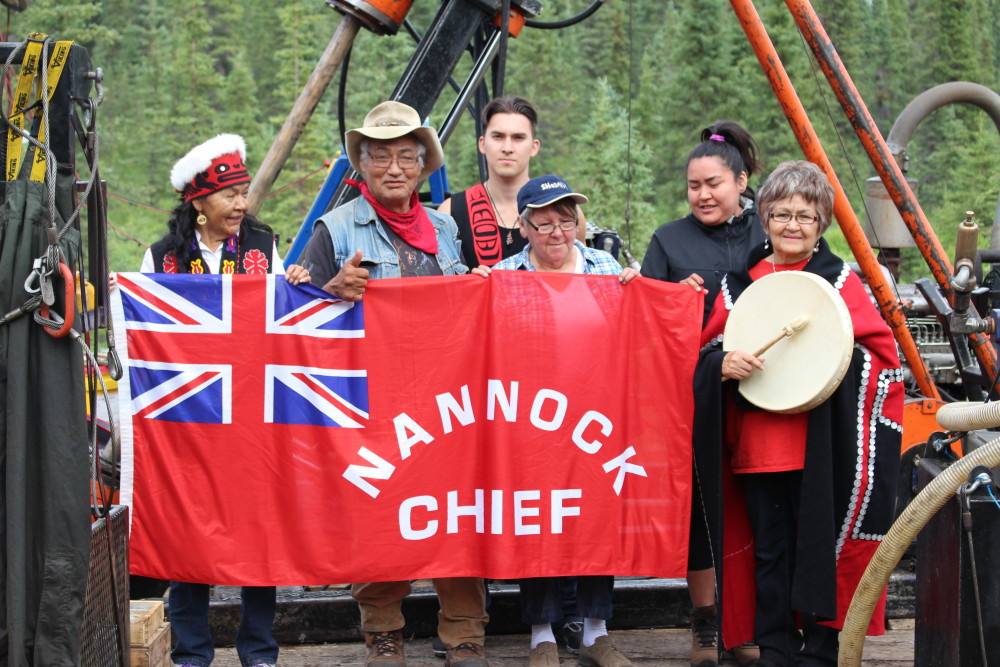
| COURSE HOME | DZOONOKWA MASKS | THE HILIGAXSTE' | CANNIBAL SOCIETY MASKS |
The Lifecycle of the Northwest Coast Copper
last update 01/06/2018

1. The Lifecycle of the Copper. This page is devoted to the lifecycle of the Northwest Coast Copper, especially as regards its social and economic life within the Winter Cerimonial. It is abbreviated. Click here for a general review of the Copper. or Download a detailed review.

Click on image to enlarge it.
2. EARLY COPPER TRADE IN NORTH AMERICA
The Kletsan trade network, centered in the Copper River region, was well underway by 200 AD. By 1000 AD, it extended much further to the south than is shown on the map.
See an early copper cache on the Northwest Coast.
Home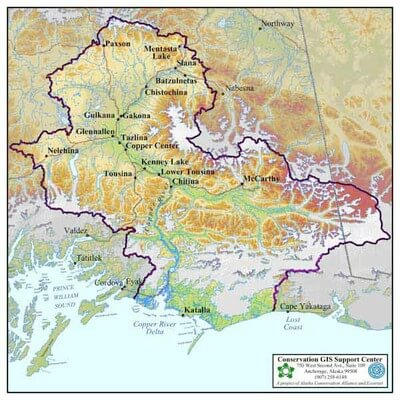
Click on image to enlarge it.
3. The Copper River Basin, virtually all of which drains deposits rich in copper. Copper nuggets, eroded from high in the basin, are carried seaward in the alluvium and bed laod of the river and it's tributaries. At low water, after each flood period, nuggets can be found in the bed of the river.
Note Prince William Sound on the left and use it to orient yourself while viewing the next image.
Home
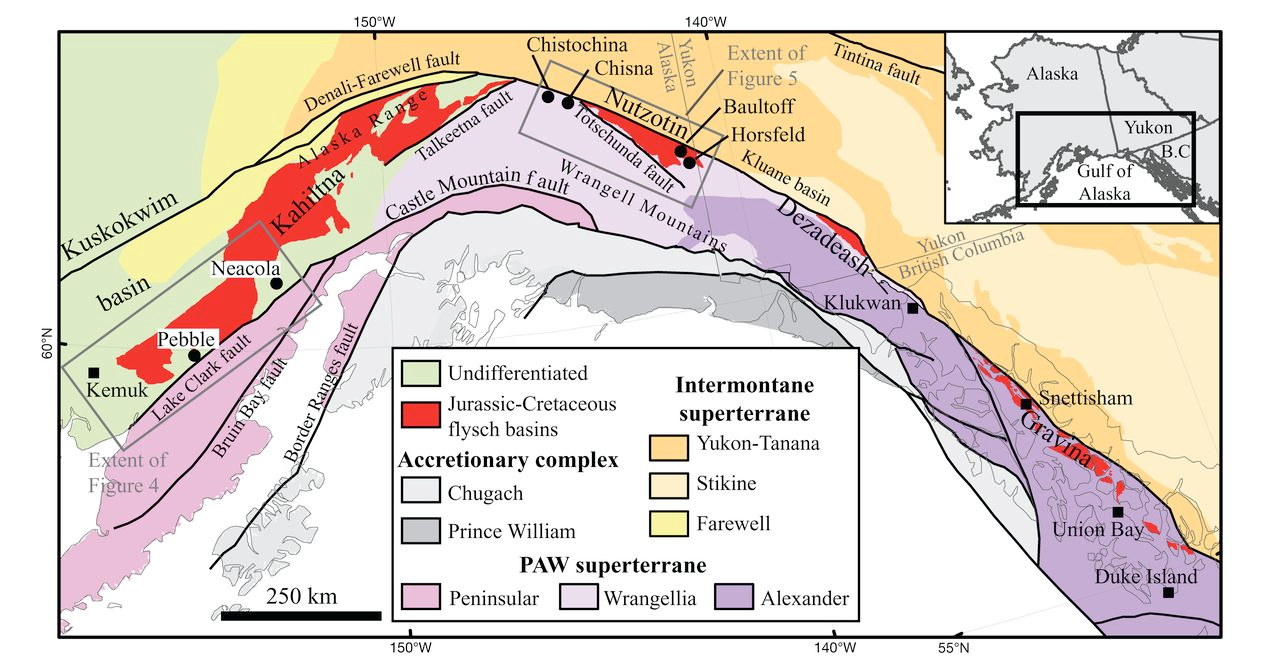
Click on image to enlarge it.
4. Copper Deposits along the coast of Alaska showing the location of important mines. Native copper is widespread in this region. The mines are places where copper and other metals are found in high concentration.
Home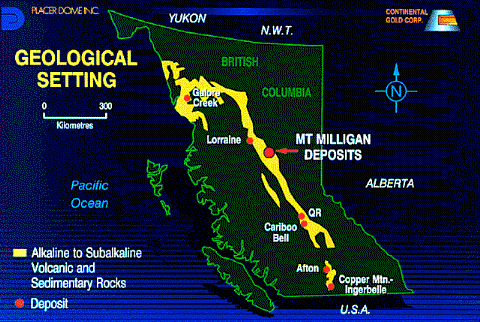
Click on image to enlarge it.
5. Copper Deposits in British Columbia. The region in yellow is where native copper nuggets are common. The red dots indicate deposits concentrated enough to mine.
| Mining is of great concern to the First Nations of British Columbia. Click on the image to learn about this problem. |
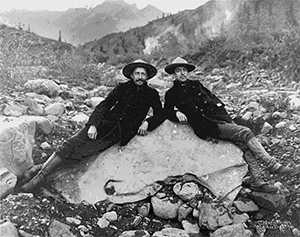
6. The bed of the Copper River at low water complete with a very large nugget.
Home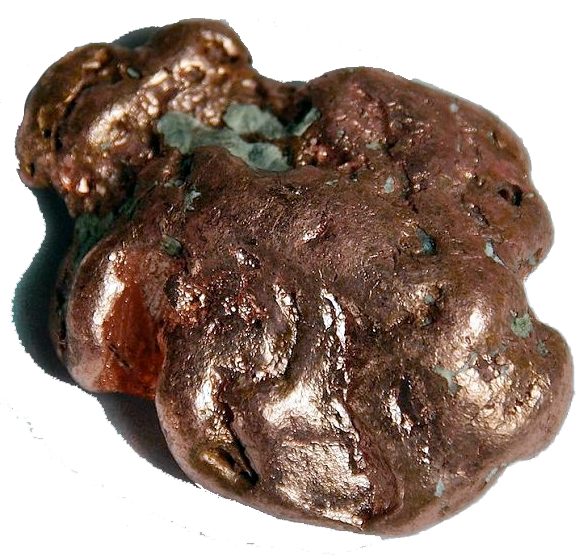
7. Typical alluvial nugget of copper. For practical pruposes, alluvial copper was the sole source of copper prior to 1790 AD.
Home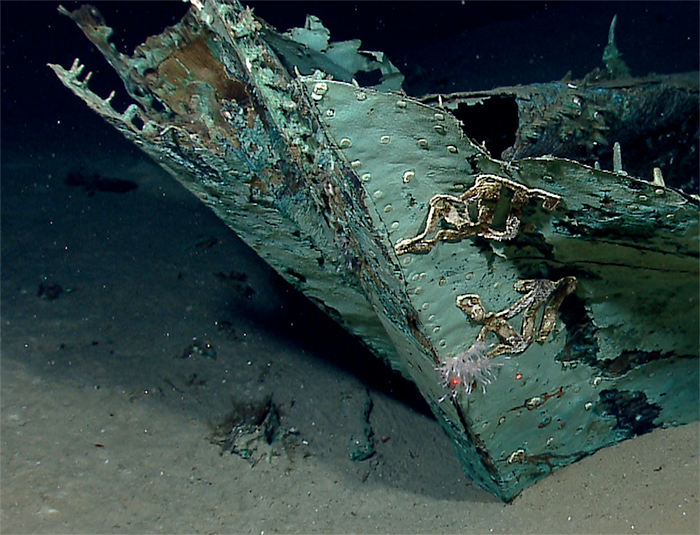
8. Copper cladding from a 19th Century wreck in the Carribian. The wood has rotted away leaving an exoskeleton of cladding. By the mid 1800s, traded ships cladding and other forms of sheet copper became the primary source of copper used to make ritual objects such as coppers.
Home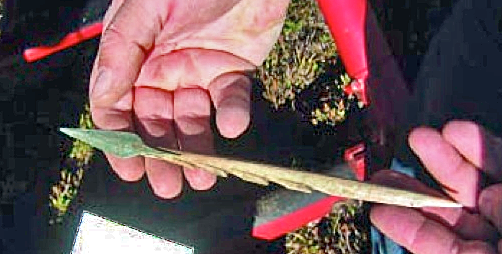
Click on image to enlarge it.
9. Copper tipped barbed bone point, ca. 1400 AD, recovered from the melting of snow fields and glaciers in St. Elias Park, Alaska, which includes the southern portion of the Copper River basin.

10. Tlingit copper club collected in 1894 by Emmons and given to the British Museum.
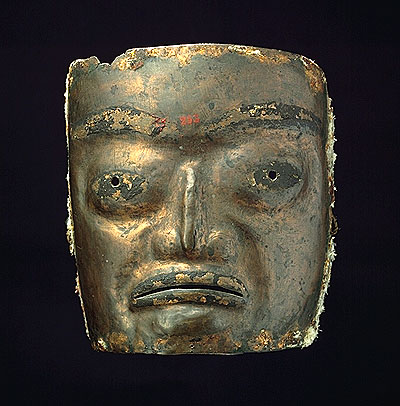
11. Copper mask dug up from a midden by the people of Masset Inlet and subsequently used in their winter ceremoonies as is indicated by the fringe of eagle feather dwon affixed using pine pitch. Collected by I.W. Powell in 1884, but its age is unknown.
Below are two masks that are among the earliest collected from the Northwest Coast and also a carved hand maul, which conform closely to the design of this copper mask.
Note the brows, the elevated nose ridge, and priminant nostriles.
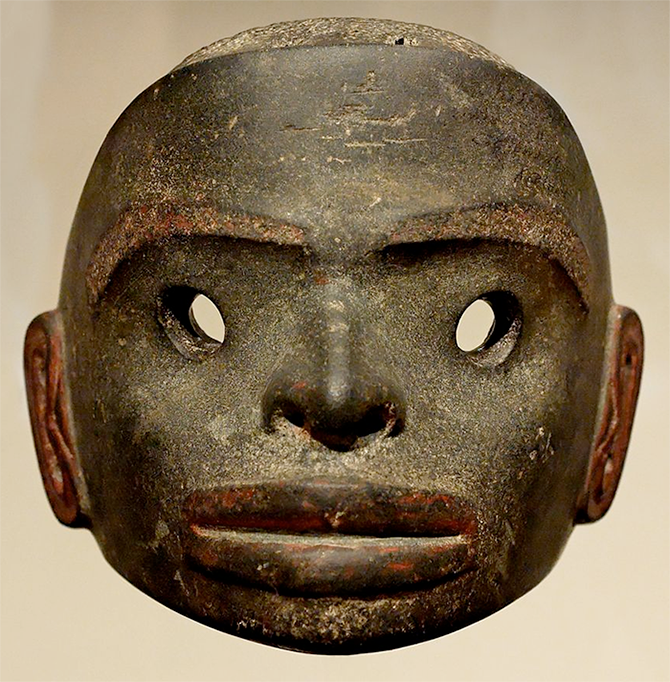
12. Nisga'a stone mask collected between 1788 AD and 1830 AD. The Nisga'a live in the Nass River valley. The mask was probably used in winter ceremonials.
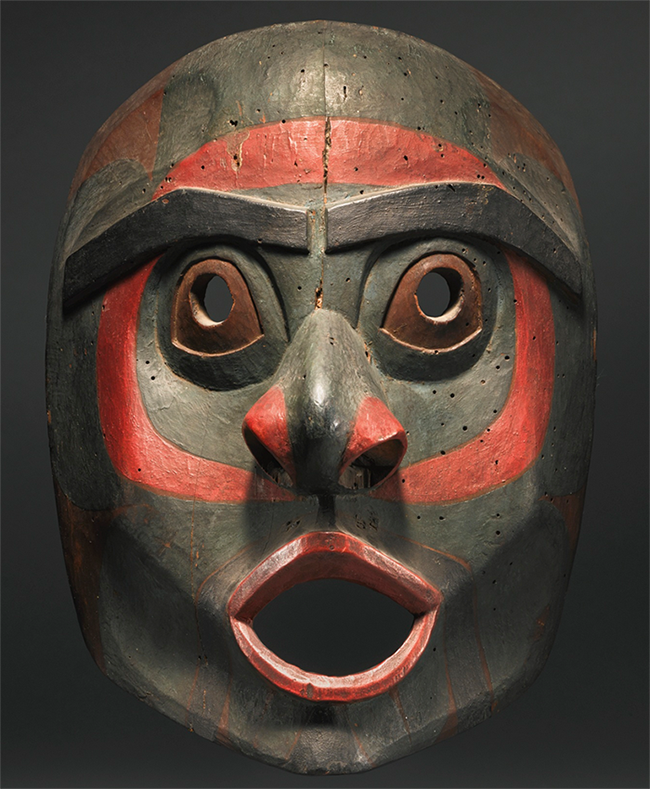
13. Winter ceremonial mask, most likely Bella Bella, collected between 1788 AD and 1830 AD.
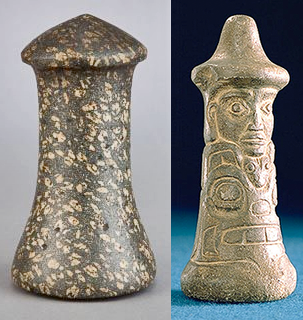
14. Hand mauls. Left: affiliation unknown; Right: Haida, ca. 1890.
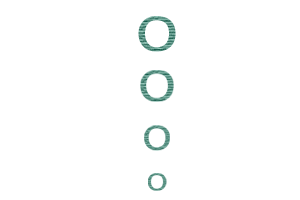
Here we have a visual hiatus. All that I have to give you is words.
copper trade
oval blanks for coppers
value of blanks
making the copper
value of the copper
rank & the lineage
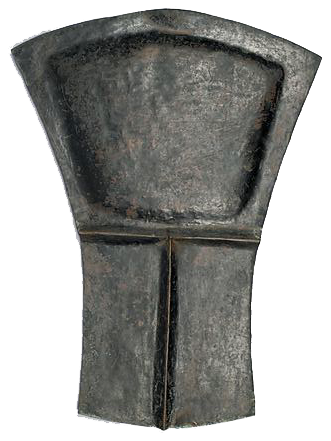
15. Kwakiutl Copper, 1800s. Typical condition of early coppers, which have lost their decoration. Note how the top of the sheild has been pounded out to give the decoratiion, now alas gone, a more three dimensional quality. Note also the raised "T" that deivides the copper into panels. The central stem of the "T" represents the "backbone" of the copper. As long as it is tact, the copper lives. The panels on either side were frequently decorated with diagonal strips of skin and hair, which represent the rib cage and torso of cannibal woman.
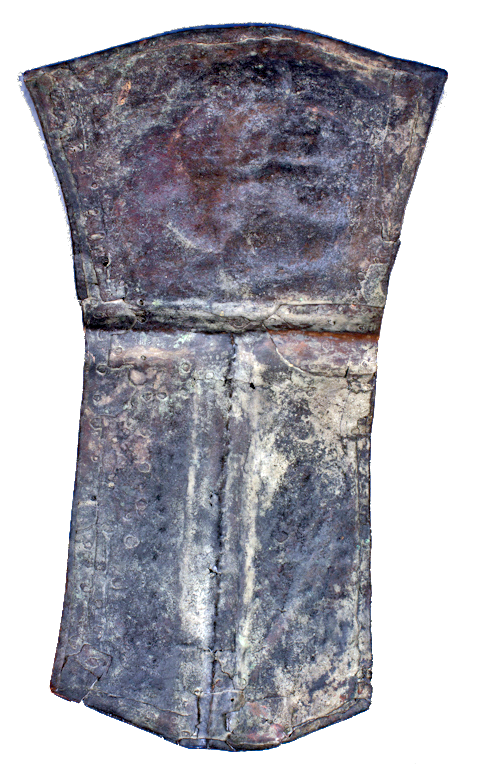
Click on image to enlarge it.
16. Tsimshian Copper, 1860. If you look on the enlarged image, you will see that this copper has been repaired many times.
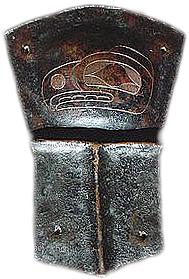
17. Tlingit Copper. Note the four holes that suggeste that this copper may once have have been displayed on a house post. In addition, note that this copper is smaller and has a shortened torso. This is the "small copper" format, which was worth about half as much as "large-format" coppers as the time of their manufacture. Fig. 17 shows a "large format" copper for comparison.
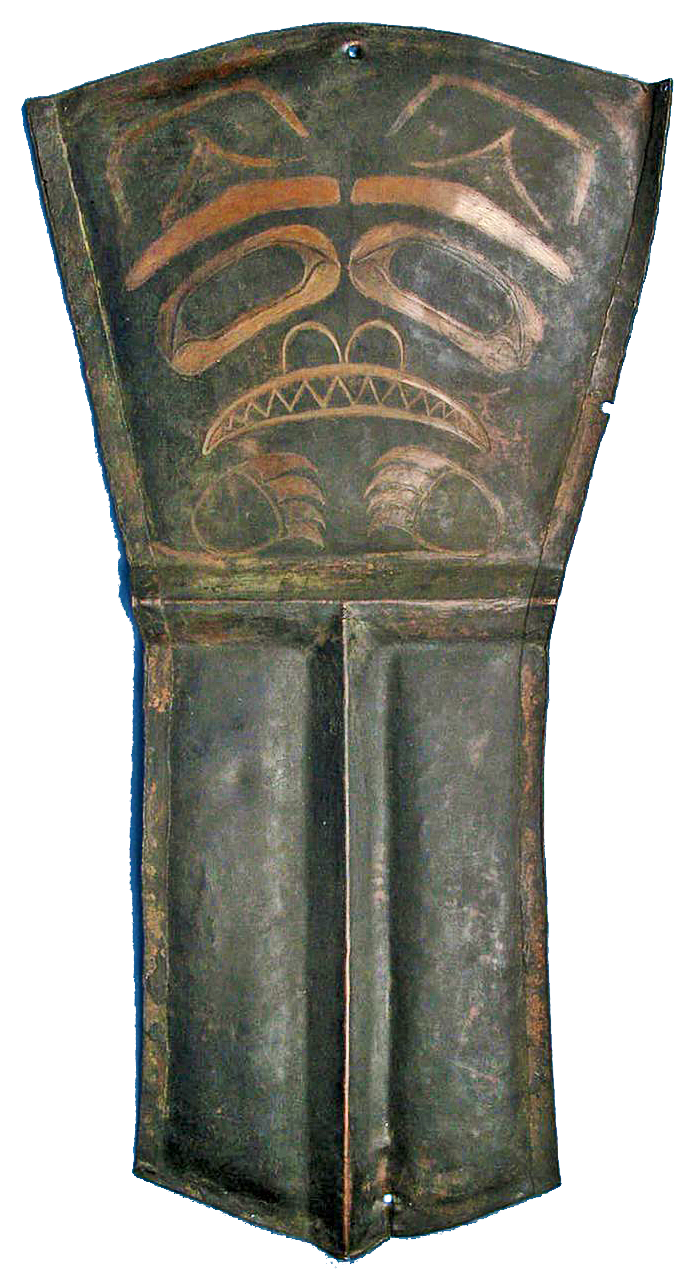
18. Typical copper. The whole copper is first painted with black lead paint. Then the design is scraped or incised through the point to reveal the copper beneath. Older coppers, such as this one, were designed to seen by the light of fires or karosene lamps. Hence, the black paint was applied thinly to show show glints of the copper in the background.
Note the holes and the way one side is bent upward. This suggests that it may have been displaced on a housepost.
Click on the image to see this copper in more detail.
| The house post is curved but the copper is flat, so a place for it must be carved into the surface of the post, as you see in the background here. | 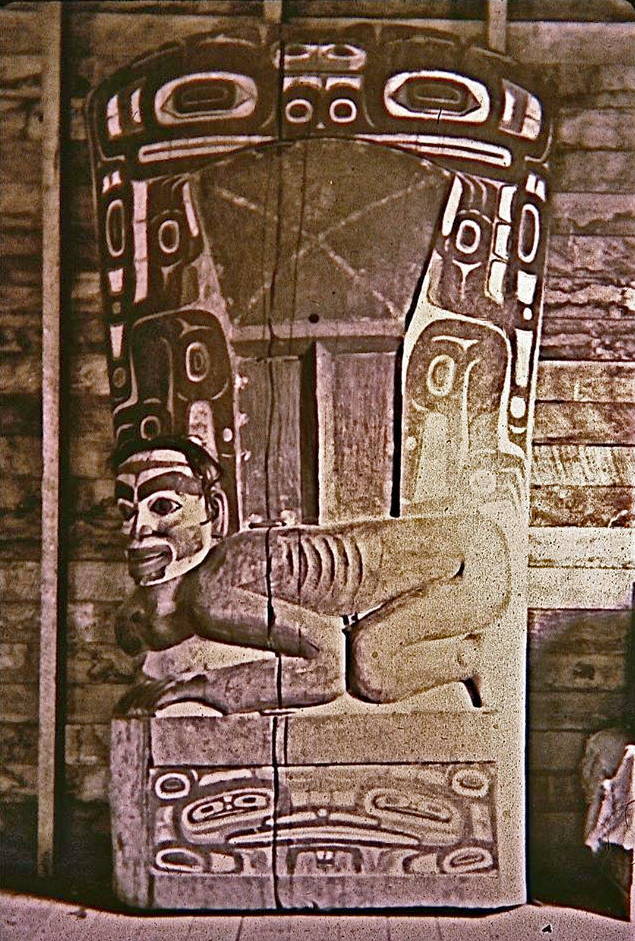 |
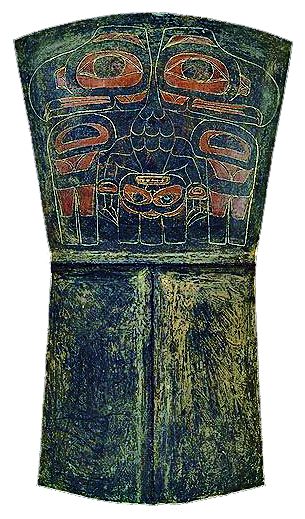
19. Haida Copper. In this example, selected design elements were painted red after the design was created by scraping.
This copper belonged to Haida Chief Soni-hat in the 1870s. He lived in the town of Kasaan on Skowl Bay, Alaska.
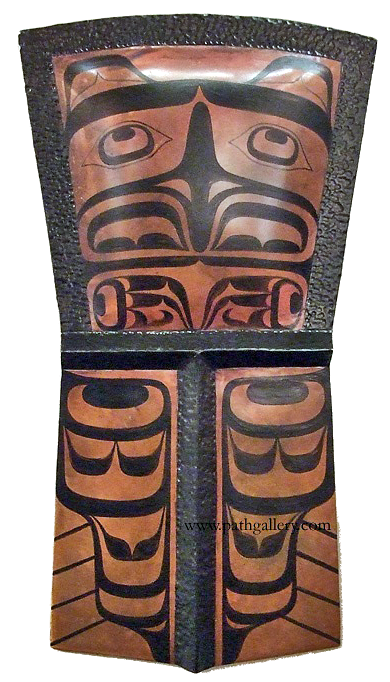
20. Modern Copper. The black is carefully painted on to form the design and the lead is gone from the paint. The surround was textured bnefore painting and the lower pannels contain designs, a feature that is uncommon in older coppers.
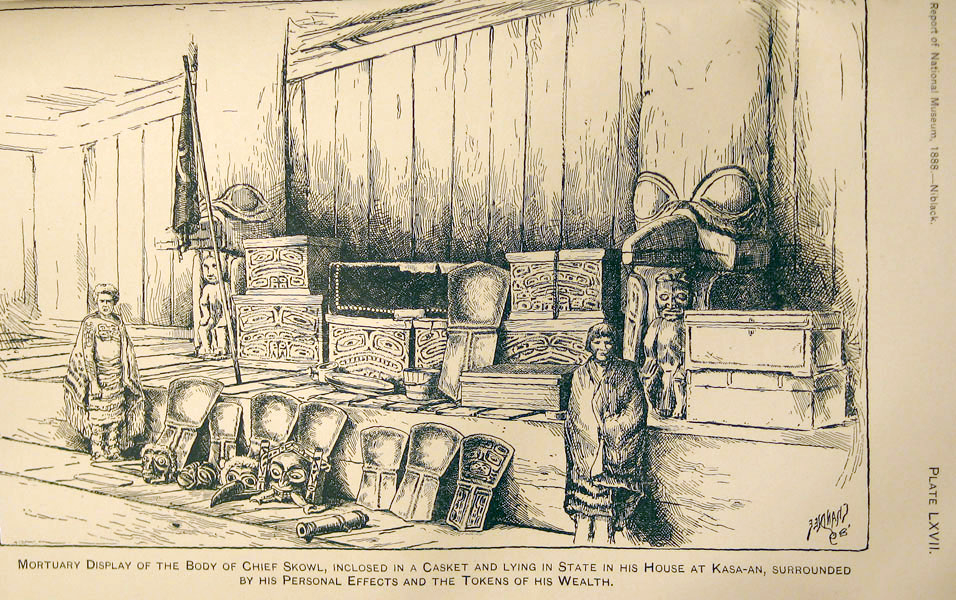
Click on image to enlarge it.
21. The coffin, center black, of Chief Skowl on the dias at the front of his long house, surrounded by his important possessions. Note the eight coppers on the bench below, together with his most important masks and a cannon.
Skowl, a Haida, was Chief of seven lineages that situated their lineage great houses at Kasaan, on Skowl Bay, Alaska. He died in the winter of 1882.
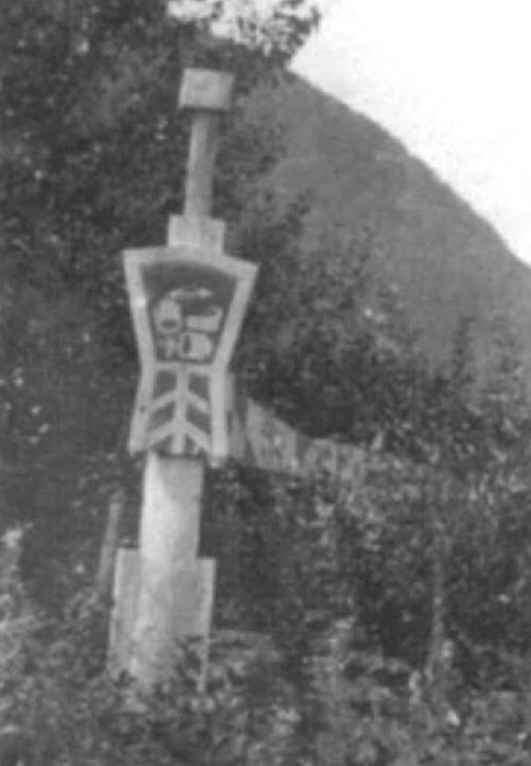
22. A grave post decorated with the image of a copper. Photographed by W.H. Gibson in 1910.
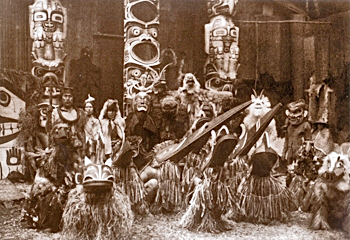
23. An Hamatsa Gathering as photographed by Curtis.
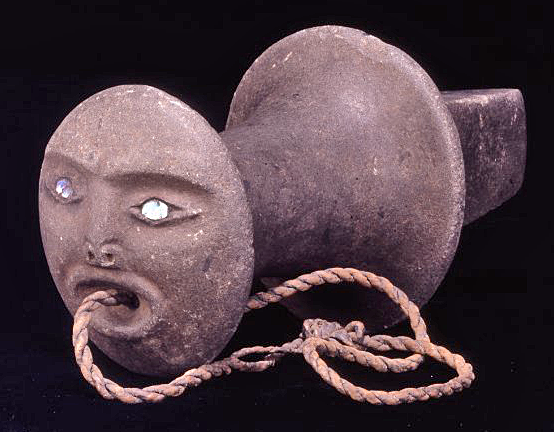
24. Copper Breaker.
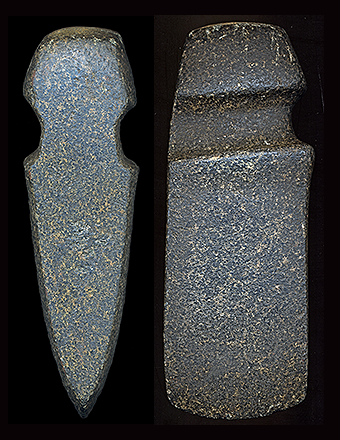
25. Possible Copper Breaker from a cabin on Mt. Chuckanut, Bellingham.
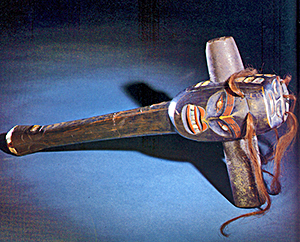

26. Two copper breakers, or K'aldayu. The one on the right is topped by an carving of Cannibal Woman. Note that the mouth is cardved all the way through just as it would be on a mask.
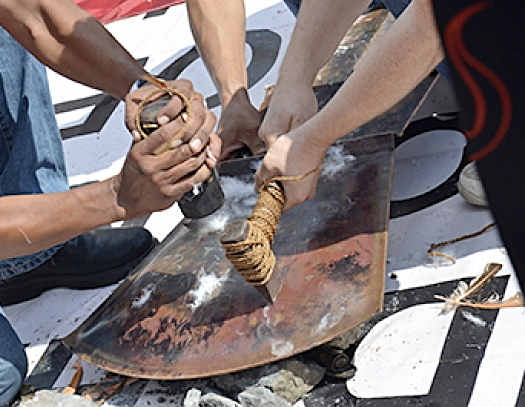
27. Kwakiutl Chief Beau Dick breaks a copper on the steps of the BC Provincial Legislature in 2013. Iron is now employed in this task.
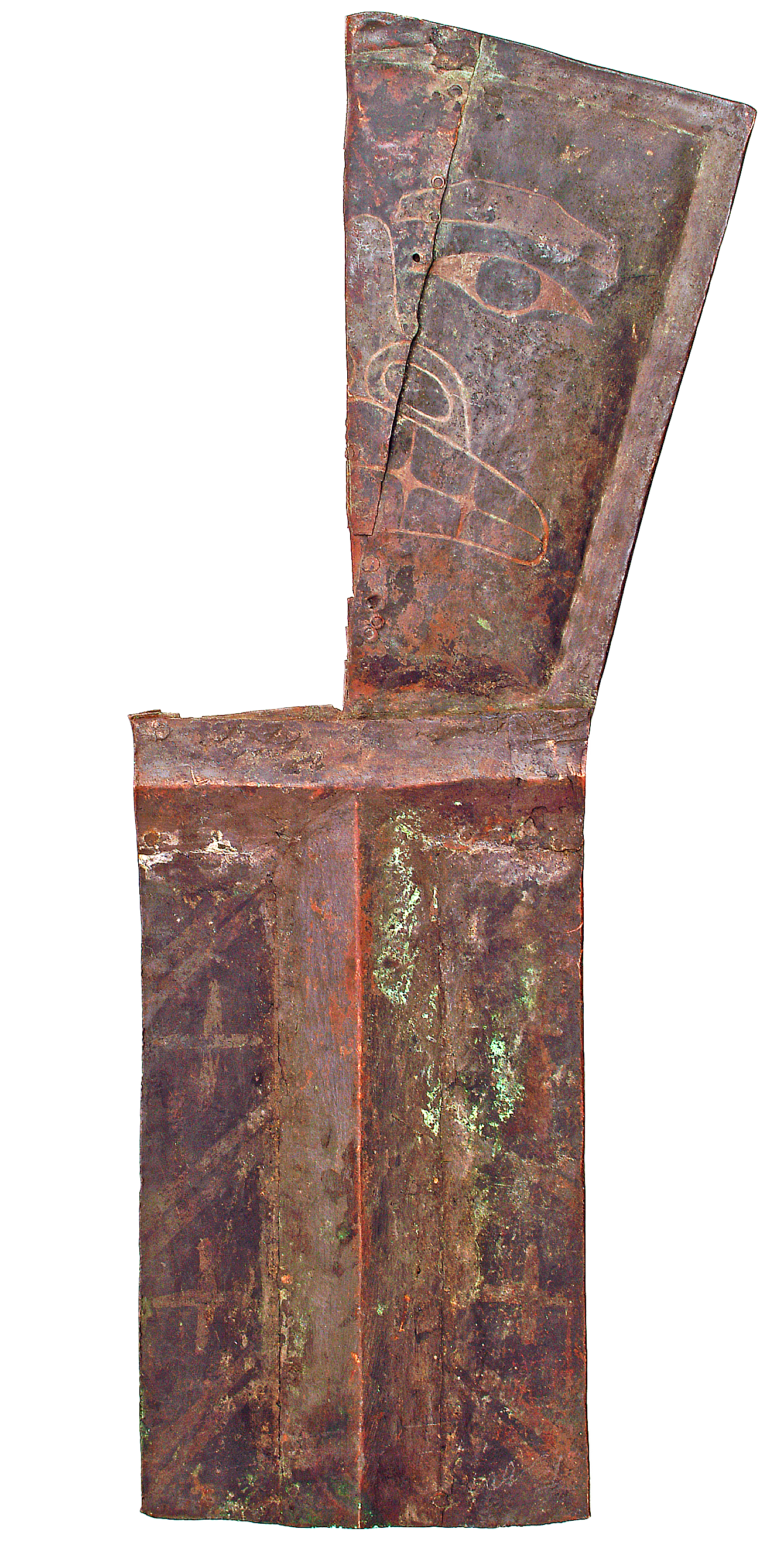
28. Kwakiutl copper that has been "broken".
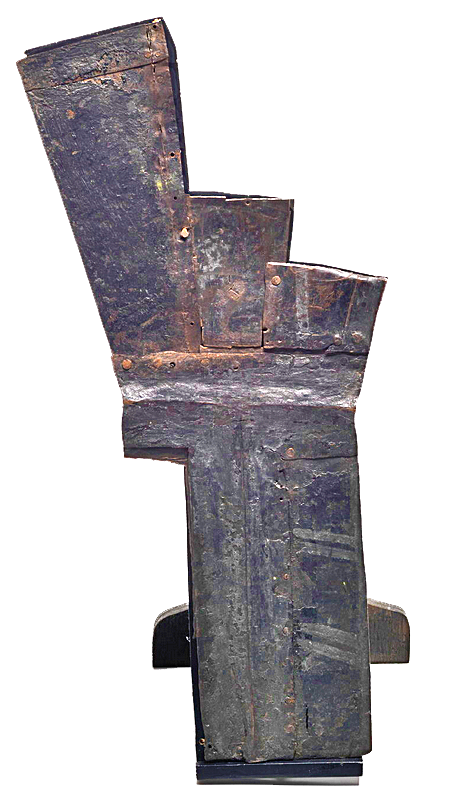
29. T'lakwa Gwa'yamkan, called True Whale.
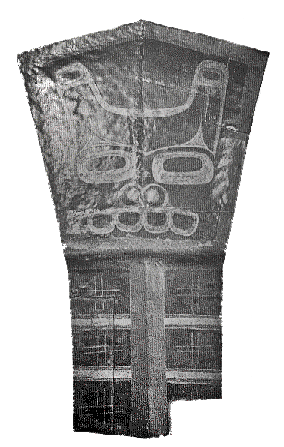
30. Broken Copper.
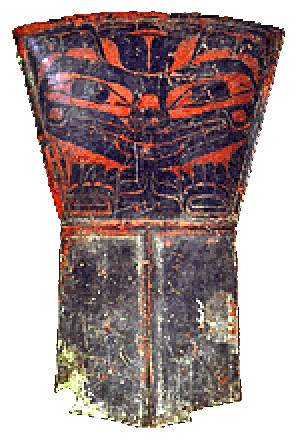
31. Broken Coppper made and owned by Chief Albert Edward Edenshaw (1812-1894). It depicts his female Grisley Bear crest
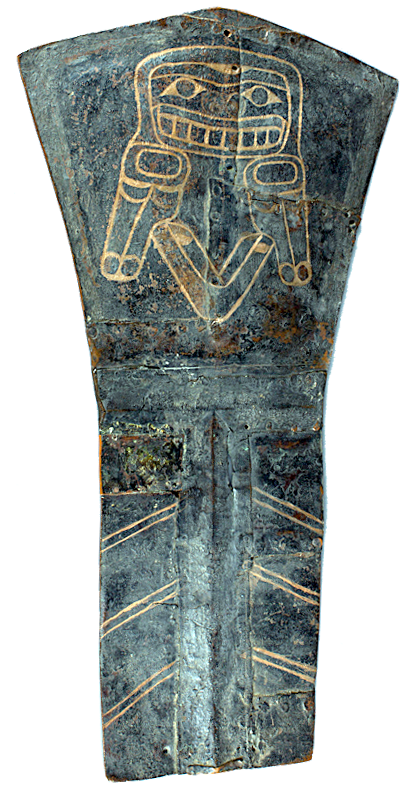
32. A copper reborn from its "backbone".
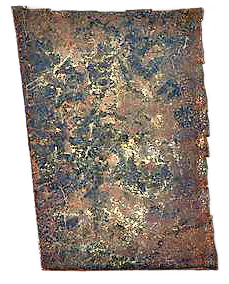
33. Small corner piece cut from copper.

Some functions of coppers:
used in the Potlatchbroken in the Cannibal Woman ceremony
broken for birth & marriage
displayed in the structure of the Great House
kept unbroken as tokens of wealth
broken and distributed as the bones of a chief
cast into the sea to shame rivals
broken in protest to force a result
When something, like the copper, is deeply embeded in the culture of a society, it may be expressed in many different places and ways. Below are a few examples for the copper.
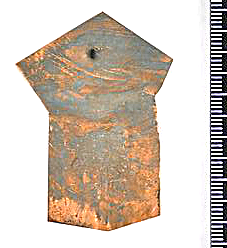
34. Small pendant in the shape of a copper.
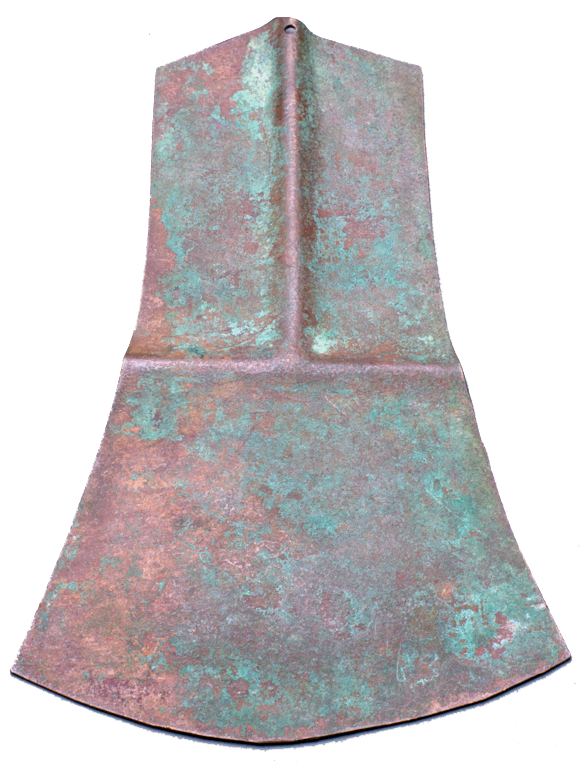
35. Pendant in the form of a copper.
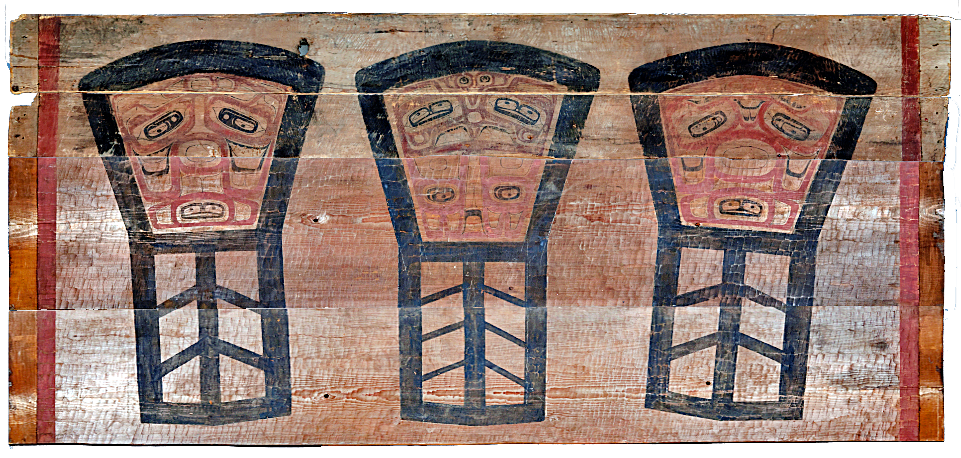
36. House boards decorated with images of coppers.
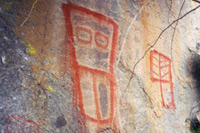
37. Pictographs of coppers.
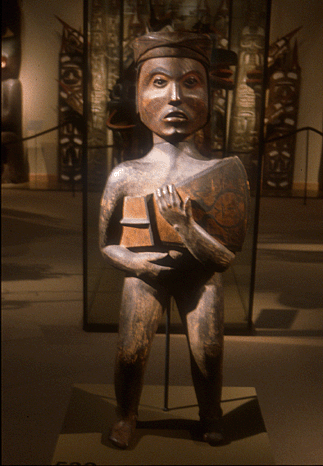
38. Commemorative statue of man with copper.

39. Tlingit Family Story Totum.
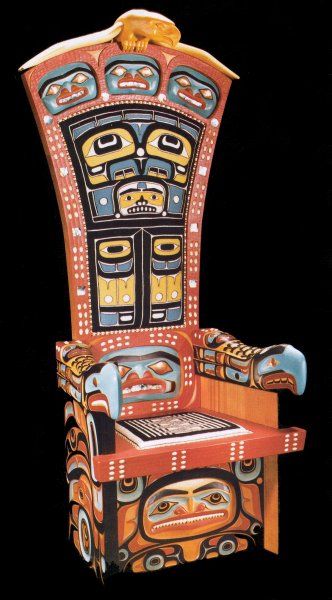
40. High Seat of the Chancellor of the University of Victoria incorporating a copper design.
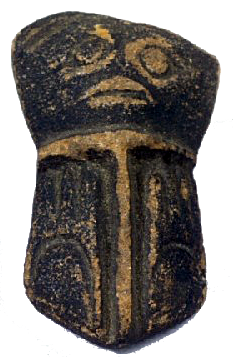
41. Tlingit sandstone copper decorated with black paint. Burke Museum.
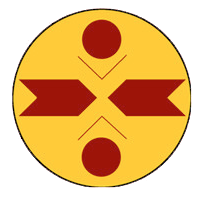
42. Modern Transformations.
Click on the symbol to the left to learn about the Copper Women's Warrior Society, which uses ritual copper shields, derived from the Northwest Coast Copper tradition, to empower and protect women in the Sisiwiss, or Sacred Breath, practice.
Text & layout © 2010, 2017 by Charles M. Nelson
all rights reserved
